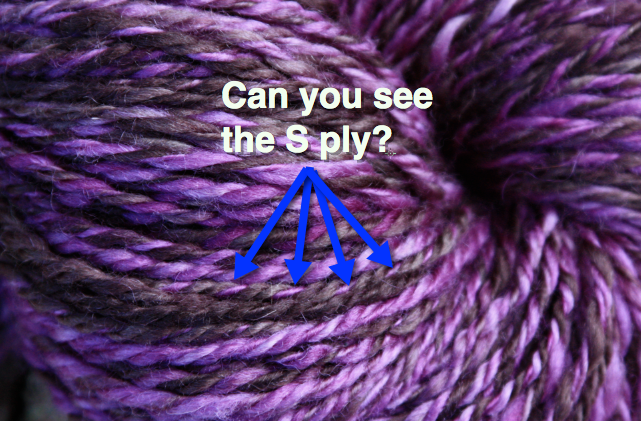Do you ever come across something at exactly the right time? That's how I feel about spinning opposing-ply yarns. This is something I first heard about on the We Are Yarn podcast, and since then I've noticed other mentions here and there, to the point where I knew I had to try it for myself.
This is the first project I plied on my new Bulky Flyer for my Ladybug Wheel, which I blogged about in greater detail earlier this week (click here to check it out)! The result was one gorgeous mega-skein of yarn:
It's approximately 215 yards of sport(ish) weight yarn, and I'm definitely going to make myself some socks with it later this year!
Spinning 101 dictates that yarns are balanced by spinning singles in one direction and plying them in the opposite direction (i.e., two Z-twist yarns would be plied into an S-twist yarn). So what happens when you ply one Z-twist with one S-twist yarn into either of those directions? The answer is as varied as your handspun, however, and there is an entire chapter in the Spinner's Book of Yarn Designs devoted to the subject.
When I ordered these 8 ounces of Superwash BFL from Nerd Girl Yarns in the #hashtag colorway, I knew I wanted to make something special with them. My hope was to get a sport-ish weight yarn which could be used for socks, and when I was reading about the increased durability that opposing-plied yarn offers, I knew that everything had come together at exactly the right time to create the perfect project!
Like most spinners, I usually spin my singles clockwise (with a Z twist) and then ply them together counter-clockwise (with an S twist). I was pretty sure this would be a difficult habit to break, so I took no chances when spinning my "oddball" S-twist single:
In my experiment, I decided to spin two Z singles and one S single to create a 3-ply yarn; the two singles plied in the same direction plied themselves around the oddball ply in a really interesting way:
As I spun, it seemed as though the Z plies were wrapping around the S ply (ie, the twist was not affecting the S ply, but the Z plies were twisting around it as it stayed static, if that makes sense). You may have to click the image above to enlarge it in order to see what I'm talking about, but if you look closely, you can definitely identify the plies in the skein.
It's approximately 215 yards of sport(ish) weight yarn, and I'm definitely going to make myself some socks with it later this year!






Comments
Post a Comment